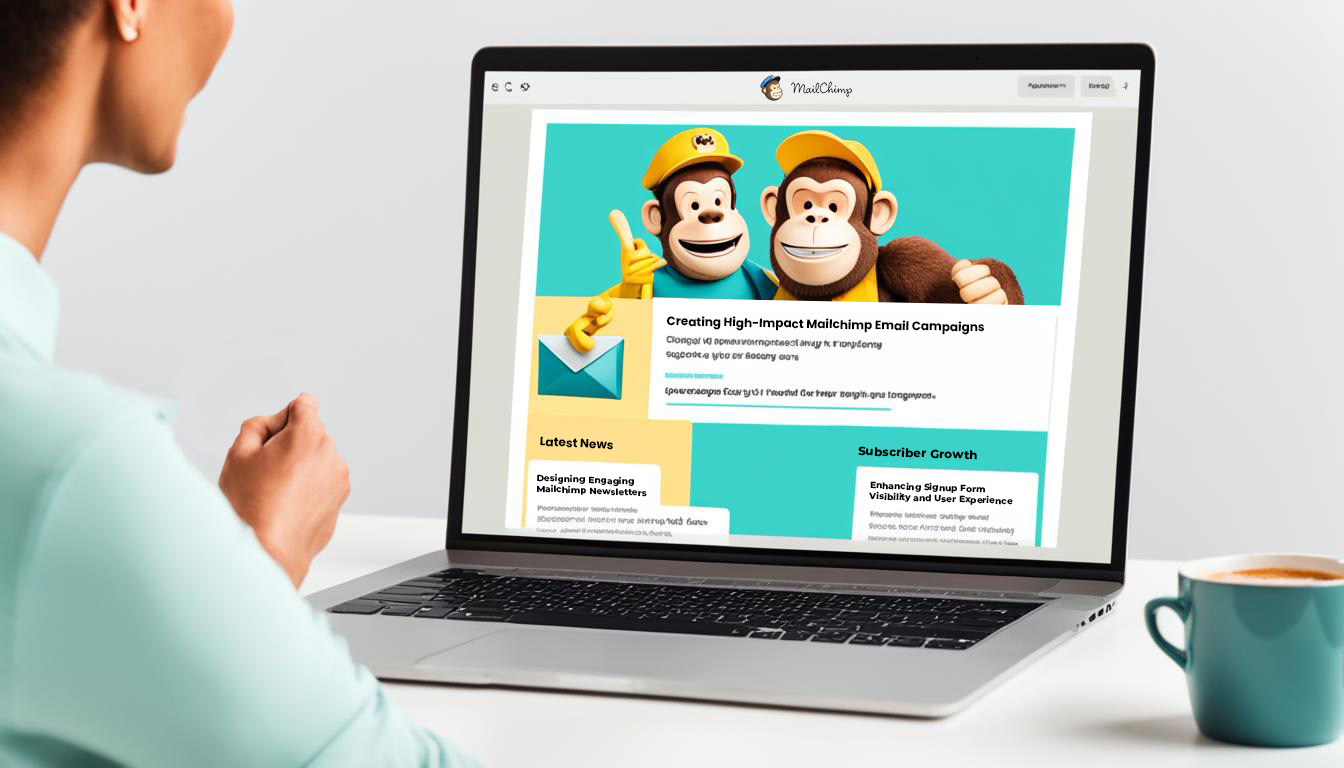Have you ever considered the power of a well-designed website to drive your small business forward? Contrary to common misconceptions, effective small business website design strategies encompass much more than aesthetically pleasing visuals. A carefully planned design can highlight your unique selling proposition and develop a strong and consistent online brand image. Like a masterpiece, your website is a unique blend of form and function, reflecting your brand’s story and commitments and serving as your primary means of engagement with your target audience. Let’s dive into the world of small business website design and expand your small business digital footprint!
Key Takeaways
- Effective small business website design strategies involve both aesthetics and functionality to create impactful online brand development.
- Your website is not just a virtual information desk but a reflection of your brand’s values and commitments.
- In today’s digital era, a well-designed website is pivotal to expanding your small business’s digital footprint.
- Your website serves as the face of your business online, making it a critical factor in shaping customer perception and driving conversions.
- An efficient, engaging, and user-friendly website can give your small business an edge in the crowded digital marketplace.
Understanding the Importance of Your Online Presence
In today’s digital landscape, the importance of a robust digital presence cannot be overstated. In many ways, a website acts as a business’s virtual storefront. It’s the first impression most customers will have of your brand, and it plays a significant role in shaping their perception of your products or services. This is what we refer to as online branding.
Understanding the behavior of consumers online, is critical to optimizing your internet visibility for businesses. A large percentage of consumers strongly rely on information found online before making a purchase decision. A well-designed website can act as your greatest asset in this regard, enhancing your brand’s credibility and driving potential customers towards your offerings. Striking design, valuable content, easy navigation, and overall exceptional user experience should be the hallmarks of a website aiming to establish a strong digital presence.
We live in a digital world where your online presence can speak volumes. It can be the deciding factor in whether a customer chooses your product or service over your competitors. Ensuring your business has a comprehensive online presence is critical to your success.
In support of this, let’s examine some real-world case studies. These are well-known brands that have utilized the power of a strong online presence to achieve remarkable success.
| Brand | Industry | Key to Online Success |
|---|---|---|
| Warby Parker | Eyewear | The company revolutionized the eyewear industry with a direct-to-consumer e-commerce model, backed by an engaging online presence. |
| ASOS | Fashion | With an on-brand and user-optimized website, ASOS successfully established a massive online customer base across the globe. |
| Airbnb | Travel | An intuitive, trustworthy website has been fundamental in shaping Airbnb’s reputation as a convenient and reliable travel accommodation service. |
The overarching lesson from these examples is clear: a strong online presence can do wonders for your business. In the following sections, we’ll delve deeper into how you can build an effective website that truly personifies your brand and drives business growth.
Setting Clear Goals for Your Website
In the digital world, having a clear strategy for your website is paramount. You can’t just aimlessly go about it and hope for the best. Instead, your web design should be goal-oriented, grounded in thorough target market analysis, and focused on clearly defining the purpose of your website. Let’s break down how this process works.
Defining Your Business Objectives
Start by asking yourself: What do I hope to achieve with my website? The answers can be as varied as boosting brand visibility, driving sales, collecting leads, or building a community. Use specific, measurable, achievable, relevant, and time-bound (SMART) criteria to establish tangible goals for your business. Having a clear objective is a critical first step in goal-oriented small business website design.
Identifying Your Target Audience
Understanding who your potential customers are is paramount for designing a website that resonates and engages. Conduct a thorough target market analysis to identify visitor demographics, interests, and behaviors. This information will inform the design process, ensuring your website addresses the needs and preferences of the people you are trying to reach.
Here, website purpose clarity comes into play. Once you’ve defined your objectives and understood your audience, you should align these components to define your website’s purpose. Is it to inform visitors about a particular topic, sell products or services, or perhaps capture leads? The clearer you are about your website’s purpose, the better your design will serve it.
“Design is not just what it looks like and feels like. Design is how it works.” ― Steve Jobs
| Business Objective | Target Market Characteristics | Website Purpose |
|---|---|---|
| Increase brand visibility | Millennials interested in eco-friendly products | Inform on green initiatives and products |
| Drive online sales | Adults with reasonable disposable income seeking luxury items | Sell high-end products |
| Build an online community | Fitness enthusiasts looking for motivation and community support | Provide platforms for discussion and sharing experiences |
In conclusion, the concept of goal-oriented small busines web design is all about planning with the end in mind. By defining clear business objectives, recognizing your target audience, and clarifying your website’s purpose, you lay a firm foundation for a compelling design that delivers tangible business results.
Choosing the Right Website Platform
The right website builder platform can effortlessly bridge the gap between your business goals and your digital presence. There are several user-friendly content management systems (CMS) designed to meet the specific needs of small businesses. Opting for a platform that offers seamless e-commerce integration can enhance your online selling capabilities and provide a catered user experience, setting your brand apart.
Evaluating User-Friendly CMS Options
Several CMS platforms cater to different business needs. Let’s evaluate some widely used platforms that are known for their ease-of-use and robust functionalities.
| Platform | Benefits | Best Suited For |
|---|---|---|
| WordPress | High flexibility, extensive plugin library, and strong SEO capabilities | Blogs, Corporate Websites |
| Shopify | Impressive e-commerce features, superb storefront templates, and integrated payment options | E-commerce Stores |
| Squarespace | Aesthetic appeal, user-friendly interface, and built-in SEO tools | Portfolio Sites, Creative Professionals |
Considering E-commerce Functionalities
For businesses with a direct sales component consideration of e-commerce functionalities is non-negotiable. A platform that offers e-commerce integration can simplify the process of setting up an online store, managing inventory, and processing transactions.
Remember that the choice of platform heavily depends on your overall business strategy and the nature of your operations. Make a well-informed decision that aligns with your specific requirements.
Essential Design Elements for User Engagement
In the vast digital landscape, excellence in user experience design is paramount to captivate your audience’s attention and keep them engaged. A well-crafted website does not merely provide information, but tells a compelling story through its engaging elements, encouraging visitors to stay and interact.

First, prioritizing a clear visual hierarchy guides visitors intuitively through your webpage. Through strategic placement and size of key content, users are intuitively directed to the most crucial parts of your site. This can be achieved with the use of contrasting colors, varying text sizes, and unique shapes.
Navigational tools form the backbone of user-friendly design. Incorporating clear, easily understand labels, offering navigational shortcuts, and ensuring all links are functional will contribute significantly to your website’s usability and subsequently, its website engagement elements.
“Design is not just what it looks like and feels like. Design is how it works.” – Steve Jobs
Furthermore, a thoughtfully designed content layout allows viewers to absorb information effortlessly, whilst interactive web features amplify user engagement. This might involve the use of infographics, engaging videos, or interactive quizzes to enhance user participation.
Importantly, calls-to-action (CTA) are influential design elements that guide user behavior and decision-making on your site. A well-placed and compelling CTA can encourage visitors to subscribe to a newsletter, take a survey or purchase a product, ultimately leading to higher conversion rates.
- Clear visual hierarchy
- Easily navigable with functional links
- Effective content layout
- Engaging CTAs
Remember, the ultimate purpose of your website is to serve your visitors, offering them a valuable and enjoyable experience that encourages them to return, engage, and convert.
Optimizing for Mobile: A Non-Negotiable Strategy
As we inhabit a tech-driven era, the dominance of mobile traffic has taken the reins. The necessity of a mobile-friendly website cannot be stressed enough. Whether it be browsing, online shopping, or information seeking, over half of internet users rely on their mobile devices. Neglecting mobile optimization could negatively impact your online presence, user satisfaction, and ultimately, your bottom line.
Responsive vs. Adaptive Design
When it comes to creating mobile-friendly websites, the terms responsive web design and adaptive design often surface. Both aim to provide an optimal user experience across multiple devices, yet they function in different ways.
- Responsive Small Business Website Design: This operates on the principle of flexibility, dynamically adjusting the layout according to the screen size and orientation. It is typically a popular choice due to its fluid nature and ability to align seamlessly with various screen resolutions.
- Adaptive Design: Unlike its responsive counterpart, adaptive design uses predefined layouts for specific screen sizes. Meaning, it adapts to the device it is viewed on, providing a customized browsing experience. It is often chosen when targeting specific devices for unique user experiences.
The choice between responsive design or adaptive design largely depends on your website’s objectives, audience, and resources.
Mobile User Interface Best Practices
Despite the choice of adaptive or responsive design, incorporating intuitive mobile user interface (UI) practices enhances user satisfaction significantly by easing navigation and increasing usability. Here are three best practices to keep in mind:
- Thumb-Friendly Design: Given that mobile users often navigate with their thumb, a thumb-friendly design enhances usability. Placing key elements within the average thumb’s reach contributes to a smooth and comfortable experience.
- Minimalistic and Clean Layout: Unlike desktop screens, mobile displays have limited space. Therefore, adopting a clean, uncluttered design with clear call-to-action buttons and easy-to-read fonts encourages user engagement.
- Fast Loading Speed: Even seconds of delay in page loading can lead to higher bounce rates. Ensuring your website loads rapidly on mobile devices provides a satisfying user experience that encourages prolonged engagement.
Following these guidelines for mobile optimization will ensure a satisfying experience for your mobile visitors, demonstrating that you value their time and engagement.
Small Business Website Design: Crafting the Visual Identity
Establishing a striking visual identity is an integral part of website branding. When done correctly, it allows users to instantly recognize your brand among competitors. In creating the visual identity, two key aspects we must consider are the color theory in design and consistency in your brand imagery.

Employing Color Psychology 101
Color significantly impacts our emotions and behaviors. Associating certain colors with your brand can evoke specific feelings or reactions in your audience, ultimately influencing their perceptions of your business. For instance, the color blue often conveys a sense of trust and professionalism, while red may evoke passion or urgency.
“The right color can become a key aspect of a brand’s identity.”
Thus, understanding color psychology can directly benefit your website branding strategies by tying specific colors to the desired emotional response from your audience.
The Power of Consistent Brand Imagery
“Consistent visual identity” may seem like a straightforward concept, but it’s incredibly powerful when executed effectively. For instance, as soon as you see an apple with a bite taken out of it, you think of Apple Inc. That’s visual identity!
Consistent brand imagery extends beyond just a logo. From the choice of colors and fonts to the style of images used, every visual element on your site should reflect your brand’s personality consistently. This not only improves your website’s aesthetics but also reinforces your brand identity in the customers’ minds.
In conclusion, a well-planned and implemented visual identity can significantly enhance your brand’s online presence. So invest time and thought into creating an identity that accurately captures your brand’s essence and sets you apart from competitors.
Incorporating Effective Navigation and Layout
An essential factor for the success of any website is its ability to guide visitors effortlessly to the desired action or information. Achieving this calls for a deep focus on website navigation best practices and an intuitive site layout that optimizes the user journey.
The significance of intuitive navigation cannot be overstated. It directly impacts how visitors interact with the website. A clear, easy-to-understand navigation encourages users to explore further and eases their information hunt. Be it a conventional horizontal menu bar at the top, a vertical one on a side, or a hamburger menu for mobile view, the choice needs to align with your website’s purpose and audience preferences.
Similarly, the layout design is pivotal in creating an effective user journey. It dictates how information is organized and presented on the site, steering users towards desired actions. An optimal layout is one that pervades harmony between aesthetic appeal and functional efficiency.
| Principle | Website Navigation Best Practices | Intuitive Site Layout Tips |
|---|---|---|
| Consistency | Navigation should be consistent across all pages to avoid user confusion. | Maintain uniformity in design elements like fonts, colors, and spacing. |
| Simplicity | Limit the number of main menu items, ideally between 5-7. | Avoid clutter by embracing white spaces that offer visual breathing room. |
| User-Centric | Use common terms that users understand, not internal jargon. | Place critical information and calls-to-action in the ‘F-pattern’ or ‘Z-pattern’ reading path. |
| Responsiveness | Ensure smooth navigation experience across different device sizes. | Adopt a flexible layout that adjusts dynamically to the users’ screen size. |
“The best interface is the one that’s invisible to the user, allowing them to focus on the task at hand.” – Jared M. Spool, Usability Expert and Author.
Ultimately, a well-planned navigation and layout design make your website less like a puzzle and more like a well-lit pathway, leading users towards a rewarding destination. Remember, your goal is user journey optimization. Smooth navigation and an intuitive site layout facilitate this journey, enhancing the overall user experience while simultaneously boosting the website’s conversion potential.
Enhancing Website Functionality and Speed
In a digital era where speed is synonymous with efficiency, enhancing website functionality and optimizing loading times are critical for retaining users and promoting engagement. Enhanced website performance, fast loading times and a streamlined user experience are the cornerstones of an effective web presence that invites and sustains customer interest.
Optimizing Loading Times for User Retention
Studies show that the longer a website takes to load, the higher the bounce rate. Swift and smooth website performance is a significant player in holding the attention of a visitor. A combination of strategized image optimization, careful choice of a dependable hosting service, and clean code practices significantly aids in decreasing loading times, thus playing a key role in user retention and engagement.
Streamlining User Interactions and Transactions
Alongside speed, user experience is a driving factor in the success of a website. A design that simplifies user interactions encourages customers to take part in transactions, ultimately impacting the bottom line positively. Whether it is seamless navigation, easily accessible information, or a user-friendly checkout process for e-commerce sites, a streamlined user experience has a direct impact on conversion rates and customer loyalty.



